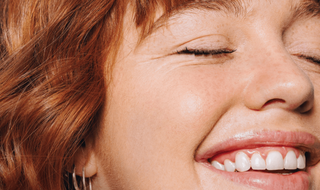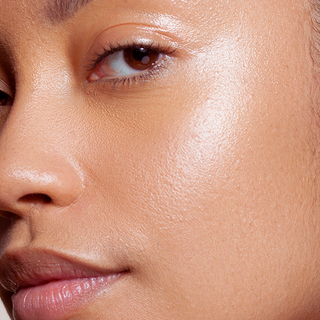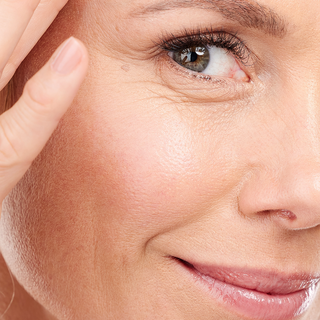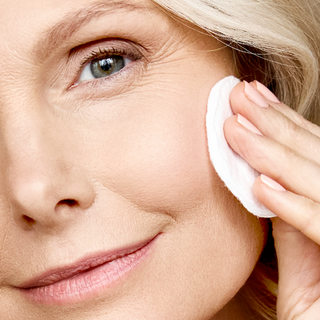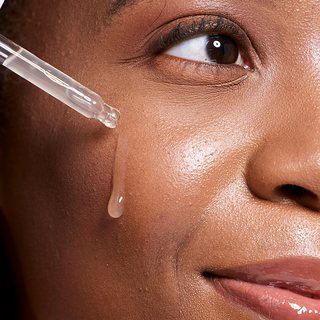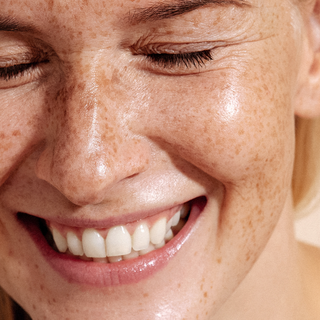If you’ve been paying attention to the skincare space lately, you’ve likely heard whispers, maybe even bold proclamations, about azelaic acid. It’s not just hype azelaic acid deserves its moment.
A Natural Acid with Medical Roots
Azelaic acid is a naturally occurring dicarboxylic acid found in grains like wheat, rye, and barley. But its real magic comes from how it interacts with the skin.
Originally developed as a prescription treatment for rosacea and acne, this ingredient has been trusted in dermatology for decades. It's been clinically proven to reduce redness, calm inflammation, kill acne-causing bacteria, and fade hyperpigmentation. Yet despite all that, it’s somehow stayed under the radar, until now.
Why It’s Trending (Finally)
So why the recent surge in popularity? Two reasons:
-
Consumer fatigue from harsh actives: Many people are tired of irritating exfoliants or overly aggressive treatments that promise results but leave the skin compromised. Azelaic acid is different, it’s powerful, but gentle enough for long-term, daily use.
-
Social media and patient education: Dermatologists have always known azelaic acid’s potential, but it’s finally catching on with the skincare-savvy community. What was once reserved for prescription pads is now accessible in over-the-counter formulations that actually work. And yes, you’ll find it all over Reddit and TikTok, but more importantly, in treatment rooms like mine.
@dermguru Don’t gatekeep
♬ (1938) Ромео и Джульетта - Сцена II: No 13, Танец рыцарей - Сергей Прокофьев
A Multitasking Powerhouse: What Exactly Is It?
People often ask me, “Is azelaic acid an exfoliant, an antibacterial, or an anti-inflammatory?” The answer is: all of the above, but what makes it unique is how seamlessly it blends these benefits without irritating the skin barrier.
-
It exfoliates by regulating keratin production, preventing clogged pores.
-
It’s antibacterial, killing off Propionibacterium acnes (a major acne trigger).
-
It’s anti-inflammatory, calming redness, swelling, and irritation, especially in rosacea and post-acne skin.
In short, it doesn’t force your skin to behave; it supports it in functioning better.
Whether you’re battling hormonal acne, lingering pigmentation, or reactive redness, azelaic acid brings balance. And that’s why it’s showing up everywhere, from clinical protocols to minimalist skincare routines. For my clients, it’s often the turning point, the one ingredient that finally calms the chaos without causing new problems.
Let’s take a deeper look at how it works on the face, and why it just might be the ingredient your skin’s been waiting for.
What Does Azelaic Acid Do for the Face?
One of the reasons I love azelaic acid, and why I so often recommend it to clients, is that it doesn’t just do one thing well. It’s what I call a “quiet multitasker.” Unlike some trend-driven ingredients that are either overly aggressive or narrowly focused, azelaic acid delivers targeted results across multiple skin concerns, without overstimulating the skin.
1. It Breaks Down Keratin and Unclogs Pores
Let’s start with the foundation: congestion.
Most acne, and even dullness, stems from one core problem: the build-up of keratin (a protein in the skin) that clogs pores. Azelaic acid helps regulate that keratin production, preventing blockages before they start. It’s not a scrubby exfoliant; it’s smarter than that. It works within the skin to encourage a smoother, clearer texture from the inside out.
2. It Calms Inflammation and Redness
If your skin ever feels hot, angry, or unpredictable (especially in colder months or during hormonal shifts), you’re not alone. Inflammation is a root cause behind so many issues, rosacea, acne, post-procedure irritation.
Azelaic acid is remarkably effective at reducing visible redness and calming the skin, which is why dermatologists have leaned on it for years to treat rosacea. In my practice, I’ve seen patients experience real relief after years of flushing and discomfort.
3. It Fights Acne-Causing Bacteria (P. acnes)
Here’s where it really shines for acne-prone skin: azelaic acid has antimicrobial properties, meaning it kills the P. acnes bacteria responsible for breakouts. What’s unique is how it does this without causing dryness or flaking, unlike benzoyl peroxide or even some prescription topicals. It’s gentle enough to use during breakouts but powerful enough to keep new ones from forming.
4. It Evens Out Skin Tone by Reducing Melanin Production
Hyperpigmentation is one of the most common concerns I see, especially for women with medium to deep skin tones, where dark spots tend to linger. Azelaic acid targets a specific enzyme called tyrosinase, which is responsible for producing excess melanin.
By inhibiting this process, it gradually fades dark spots, melasma, and post-acne marks, often more gently and safely than hydroquinone or acid peels. And yes, it’s even effective on stubborn hormonal pigmentation.
5. It Protects from Free Radical Damage
Last but not least, azelaic acid is a potent antioxidant. That means it helps defend your skin from environmental stressors, think pollution, UV exposure, and oxidative stress, all of which accelerate aging. By neutralizing free radicals, azelaic acid not only keeps skin healthier over time but also slows the visible signs of aging, like dullness and fine lines.
Is Azelaic Acid Safe to Use Every Day?
Yes, in most cases, absolutely.
And as someone who has worked with every skin type imaginable, I can confidently say that azelaic acid is one of the few active ingredients that’s both potent and well-tolerated by a wide range of skin conditions. That said, like any transformative ingredient, it still requires thoughtful introduction into your routine, especially if your skin is reactive, sensitized, or newly exploring actives.
How to Build Tolerance Safely
If you’re new to azelaic acid, I always suggest starting low and slow, especially if you're introducing a 10% or higher concentration. Here’s a simple progression I use with clients:
-
Week 1–2: Apply 2–3 nights a week to clean, dry skin. Use after your cleanser, before moisturizer.
-
Week 3–4: Increase to every other night or even daily, depending on how your skin responds.
-
After 4 weeks: You can consider using it AM and PM, just ensure you're pairing with SPF in the morning.
If you're using a prescription-strength product (15–20%), your provider will guide your ramp-up. But even then, azelaic acid is noticeably gentler than many clinical actives.
And here’s something that surprises many people: azelaic acid doesn’t make your skin more sensitive to sunlight. Unlike AHAs or retinoids, it’s not a photosensitizer, so you can use it in the morning if that’s what works for you.
Let’s Talk About “Purging”
There’s a lot of confusion around purging, so let’s clear the air.
Purging happens when cell turnover increases and “under-the-surface” congestion comes to light. Retinoids are notorious for this. Azelaic acid, on the other hand, works more gradually and selectively. It encourages exfoliation without overstimulating, so most users don’t experience the same dramatic purging that’s common with retinol or glycolic acid.
Still, some mild tingling or breakouts in the first couple weeks can happen, especially if your barrier is already compromised. That’s not a red flag, it’s often part of the adjustment. But if you’re feeling persistent stinging, peeling, or tightness, that’s irritation, not purging. Scale back, hydrate, and protect your skin barrier.
10+ Unique, Real-World Benefits for Different Skin Concerns
Many skincare blogs will tell you that azelaic acid helps with acne and pigmentation, which is true. But what they don’t always explain is just how versatile, gentle, and clinically sophisticated this ingredient really is. In my experience working directly with clients, from teens with stubborn breakouts to adults with chronic redness or hormonal skin shifts, azelaic acid has quietly become a go-to hero across multiple skin types and conditions.
Let’s go beyond the surface and look at the real-world ways azelaic acid makes a visible difference, especially when other actives fall short.
1. Acne-Prone Skin: Unclogs Pores + Kills Bacteria
Azelaic acid tackles two major acne triggers in one step, it regulates keratin (preventing clogged pores) and kills Propionibacterium acnes, the bacteria responsible for inflammation. This makes it ideal for both whiteheads and deeper, inflamed breakouts.
2. Post-Acne Marks: Fades PIH Without Irritation
Unlike aggressive peels or hydroquinone, azelaic acid fades post-inflammatory hyperpigmentation gradually and gently, helping the skin naturally return to an even tone without compromising barrier health.
3. Rosacea: Calms Redness, Bumps, and Sensitivity
Azelaic acid is one of the very few actives that’s clinically approved for rosacea. It works by reducing inflammation and minimizing vascular dilation, which helps soothe the red patches, papules, and general heat flare-ups so common in reactive skin.
4. Hyperpigmentation & Melasma: Brightens Without Bleaching
For clients struggling with melasma or stubborn dark spots, especially those with deeper skin tones, azelaic acid offers a safe, non-bleaching alternative to prescription skin lighteners. It targets the tyrosinase enzyme that drives melanin production, without disrupting surrounding healthy pigment.
5. Hormonal or Adult Acne: Balances Sebum Production
Many women in their 30s and 40s come to me with new, frustrating breakouts. Azelaic acid helps by gradually reducing oil production over time, without triggering a purge or drying the skin. It’s also fantastic at treating those deep, under-the-skin bumps that never fully come to a head.
6. Barrier Repair: Supports Sensitive, Reactive Skin
Azelaic acid isn’t just non-irritating, it’s actively calming. That’s why I often recommend it as part of a skin “reset” routine after over-exfoliation, a flare-up, or compromised barrier function. It calms, strengthens, and helps skin find its balance again.
7. Dull or Textured Skin: Gentle Resurfacing Without Flaking
Want glow without the downtime of acids or retinol? Azelaic acid offers a smooth, subtle resurfacing effect that enhances radiance and improves texture, no flaking or peeling required. This makes it especially useful for sensitive skin types or rosacea-prone clients who can’t tolerate exfoliating acids.
8. Shaving Bumps: Soothes Post-Shave Inflammation (Great for Men Too!)
Azelaic acid is fantastic at calming inflammation in the beard area, bikini line, or anywhere prone to razor burn or ingrown hairs. It gently unclogs hair follicles and reduces redness, making it a go-to for post-shave treatment in both men’s and women’s routines.
9. Pregnancy-Safe Routine: Safe Alternative to Retinol
When clients become pregnant, they’re often told to stop using their actives. Azelaic acid steps in as a safe, OB-approved alternative that still delivers results, brightening, calming, and preventing breakouts without the risks associated with retinol or hydroquinone.
10. Post-Accutane Maintenance: Keeps Pores Clear Long-Term
For those coming off isotretinoin (Accutane), maintaining results without overburdening the skin is key. Azelaic acid helps gently maintain clarity, regulate lingering oil production, and support a healthy barrier as the skin re-adjusts.
The Maria Kane Method: How to Integrate Azelaic Acid into Your Glow Routine
One question I hear a lot from clients is, “How do I actually fit azelaic acid into my current routine?” And it’s a great question, because like any powerful ingredient, placement matters. When used correctly, azelaic acid doesn’t just improve your results, it enhances the performance of everything else you’re using.
At Maria Kane, our approach has always been about simplicity with intention. I don’t believe in complicated, 12-step routines or stacking ingredients for the sake of it. I believe in giving your skin only what it needs, and nothing it doesn’t. That’s why azelaic acid fits so beautifully into our philosophy.
What Maria Kane Product Contains Azelaic Acid?
⚡ Advanced Polishing Pads
If you’re looking for a high-performance, clinical-grade azelaic acid product that’s also gentle enough for sensitive skin, this is it.
-
Formulated with azelaic acid, TCA, and salicylic acid, these pads exfoliate, brighten, and clarify, without leaving skin stripped or inflamed.
-
They’re especially effective for clients dealing with melasma, post-acne marks, dull texture, or stubborn breakouts that need a little extra push.
-
What makes them unique? The formula is powerful but buffered, so even sensitive skin types can benefit from their glow-boosting effects.
💡 Pro tip: I recommend using these pads once or twice a week, particularly on “off” nights when you’re not using retinol or vitamin C. This helps keep the skin cycle moving without over-exfoliating.
How Azelaic Acid Fits Into the “Essential 5” Routine
We built our product line to simplify your skincare without sacrificing results. We call this our “Essential 5”, a clinically effective routine that addresses 90% of skin concerns with just five high-impact products. Here’s how azelaic acid fits seamlessly into that system:
1. Non-Stripping Cleanser
→ Try: Soothing Peptide Cleanser
Start with a clean, calm canvas. This cleanser removes dirt, makeup, and impurities without disrupting your barrier, so your actives can actually penetrate and work.
2. Azelaic Acid Treatment
→ Try: Advanced Polishing Pads (1–2x/week)
Use these pads after cleansing on dry skin, focusing on areas of pigmentation, breakouts, or uneven texture. Avoid layering directly with other acids or retinol on the same night to keep things balanced.
💡 Best used on “off” nights from retinol or vitamin C for skin cycling.
3. Retinol Cream (PM)
→ Try: Overnight Youth Booster
On alternate nights, use this high-efficacy retinol cream to support cell turnover, boost collagen, and smooth fine lines. When paired with azelaic acid (on separate nights), this duo becomes a powerful anti-aging and brightening protocol.
4. Barrier-Repair Moisturizer
→ Try: Barrier Replenishing Cream
Whether you’re using actives or not, hydration is non-negotiable. This cream locks in moisture, calms inflammation, and reinforces the skin barrier, especially after using azelaic acid or retinol.
5. Vitamin C Serum (AM)
→ Try: Brightening CE Ferulic Serum
This is your daily antioxidant shield. Use it in the morning after cleansing, and it will work synergistically with azelaic acid to reduce pigmentation and protect against environmental stress.
💡 Use vitamin C and azelaic acid on separate days if your skin is sensitive, or layer with caution.
6. Tinted SPF (AM)
→ Try: Illuminating Beauty Balm SPF 44
No brightening routine is complete without sun protection. This tinted SPF not only protects, it enhances your natural glow and helps prevent pigmentation from returning.
Azelaic acid isn’t just another step, it’s a skin-stabilizing, tone-correcting, inflammation-calming force that fits right into your lifestyle, whether you're a multitasking mom, a skincare minimalist, or someone rebuilding their skin after years of trial and error.
Is Azelaic Acid Worth Adding to Your Routine?
If you’ve been searching for an ingredient that delivers real results without the drama, azelaic acid might just be the skincare soulmate you didn’t know you needed. Whether you’re battling breakouts, brightening dark spots, calming chronic redness, or simply looking for a daily multitasker that works, azelaic acid offers transformative results with minimal irritation.
What I love most about it, and what my clients consistently echo back, is this: it meets your skin where it is and helps it perform better. Not harder, not faster, just better. That’s the kind of intelligence and intention I believe every product in your routine should have.
From beginners building their first real routine to seasoned skincare lovers refining their regimen, azelaic acid fits effortlessly into almost any skin journey. It embodies exactly what we stand for at Maria Kane: simplified, science-backed skincare with purpose.

